Top 5 Interesting Facts about Wolverines
Wolverines have short legs, long hair, and elongated snouts, giving them a hybrid appearance of a dog, skunk, and bear. A blond or ivory fur stripe that ... read more...extends from each shoulder to the animal's tail's base, as well as a character mask of dark fur around the animal's eyes and forehead, are further distinguishing features of wolverines. Wolverines were formerly almost driven to extinction for their fur, but they have recovered and are now considered to be a species of least concern. But it does not imply that they are simple to locate. These are the most interesting facts about wolverines you shouldn't miss, even though much about them is still unknown.
-
Folklore would have you believe that wolverines are the strongest creatures in the animal kingdom, but science has mostly disproven this. Although these animals can be violent, their bite is only fairly powerful: A 2007 research paper's conclusions state that the animal's canines have a bite force of 224 Newtons. Compare it to the polar bear's record-breaking value of 1646.7 Newtons, tigers, lions, and grizzlies aren't far behind.
To assess the biting force of animals with various body sizes, the researchers also computed the bite force quotient (BFQ). "Species with BFQs around 100 may be classified as having near "normal" biting force for their body size", the researchers state. Wolverines weigh in at roughly 105 pounds, which is very average. The Sun bear (160.5) and the palm civet (161.1) also have higher rankings, along with several other weasels. Mustela nivalis, or the least weasel, has the animal in the study with the greatest BFQ, coming in at 164. The Tasmanian Devil, with a BFQ of 181, surpasses them all.
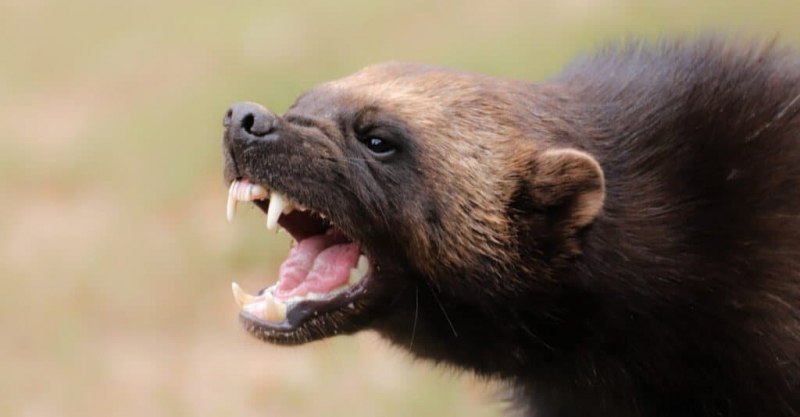
Photo: https://a-z-animals.com/ 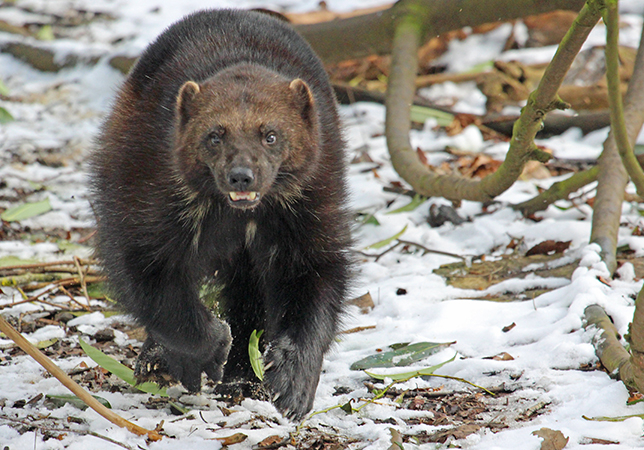
Photo: https://www.cotswoldwildlifepark.co.uk/ -
Wolverines are omnivores, meaning they consume both meat and plants. A large game like caribou, moose, and mountain goats, as well as lesser animals like ground squirrels and rodents, as well as berries and bird eggs, are common food for wolverines. However, they prefer meat and will go to considerable lengths to obtain it. In search of food, they can travel up to 15 miles (24 kilometers) in a day and would even consume dead animals that they did not hunt.
Wolverines have an acute sense of smell and are capable of detecting prey 20 feet beneath the snow. They will kill animals that are hibernating by digging into their burrows.
Wolverines are sly hunters when looking for food. They can smash a cadaver and eat through bone because they have powerful jaws and teeth. They have been observed consuming the teeth and bones of their prey.
Additionally, wolverines appear to understand how to stockpile food. According to research, wolverines use snow to keep their food cold, which is one of the most interesting facts about wolverines. The Wolverines will return to their stash to get a meal when food is in short supply.
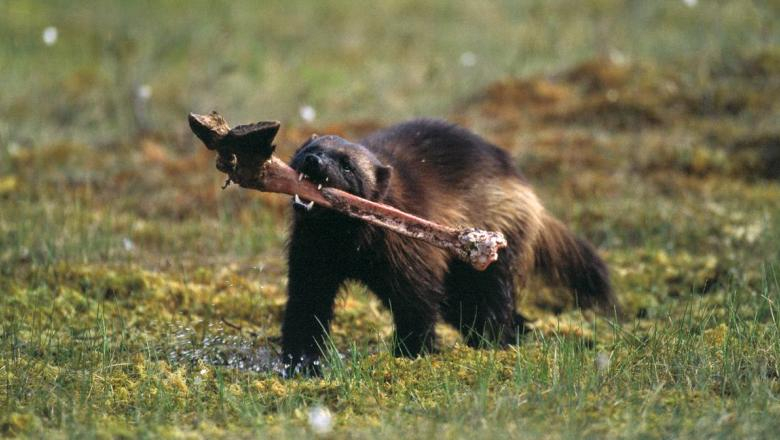
Photo: https://www.largecarnivores.fi/ 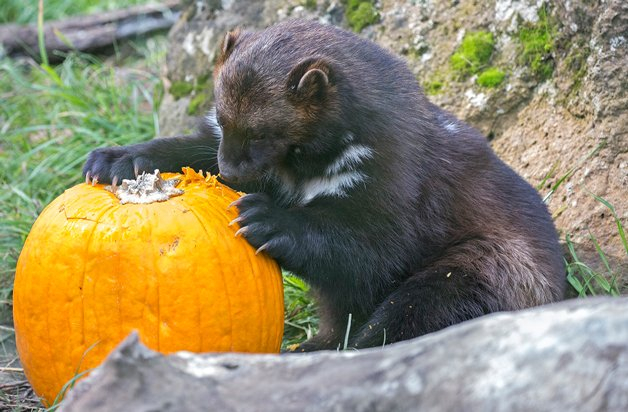
Photo: https://twitter.com/ -
Wolverines choose colder climates because they may build dens in the snow in addition to storing food there. They inhabit the Arctic and Subarctic, as well as the tundra, taiga, boreal woods, and grasslands of northern Europe, Asia, and North America.
These creatures have adapted to survive in the extreme cold. The fact that their thick, oily fur resists cold has made them a target for fur traffickers. Wolverines have large paws that spread to double their size when they contact the ground, spreading their weight to help them move through the snow (they can run up to 30 mph).
Due to their solitary nature, wolverines require large areas of land to wander. Only females are allowed on the males' land, which they mark with their scent. Their areas of control can extend from 40 miles (65 km) to over 372 miles (600 km). Wolverines sleep during the day and hunt at night since these hunters are nocturnal.
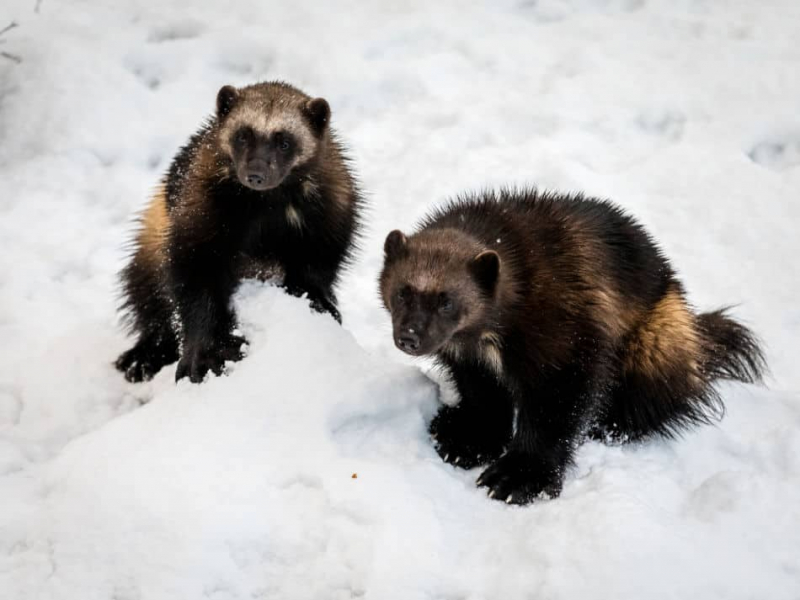
Photo: https://northamericannature.com/ 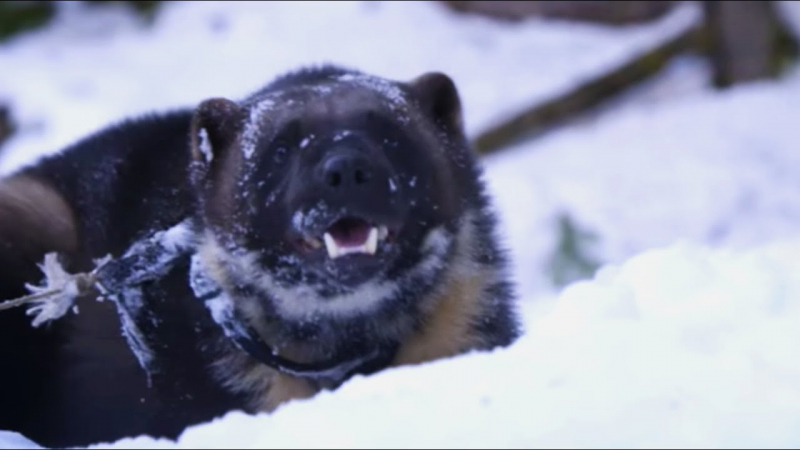
Photo: https://www.coolantarctica.com/ -
One of the most interesting facts about wolverines is they have several partners. This implies that one male will mate with multiple females he let live in his territory in the spring and summer when they achieve sexual maturity, around age two. Females build dens where they will give birth to their young after mating. Gestation lasts between four and seven weeks after the fertilized eggs are implanted in the fall or winter. Every year, during the same period, generally in the late winter or early spring, females give birth to two or three young. Most babies are born in February and March.
Baby wolverines are called kits. Kits are born with their eyes closed, under five inches long, weighing only a few ounces, and coated in white fur. The kits have darker fur by the time they are six weeks old, and their faces, necks, and chests each have distinctive color patterns. Males occasionally stop by and take care of the young while the females do most of the parenting.
Until they are ready to have their kits, kits will occasionally remain with their mother. Wolverines reach sexual maturity at roughly 2 years of age. The Wolverine Foundation claims that by September, kits typically leave on their own. An average wolverine lives seven to twelve years.
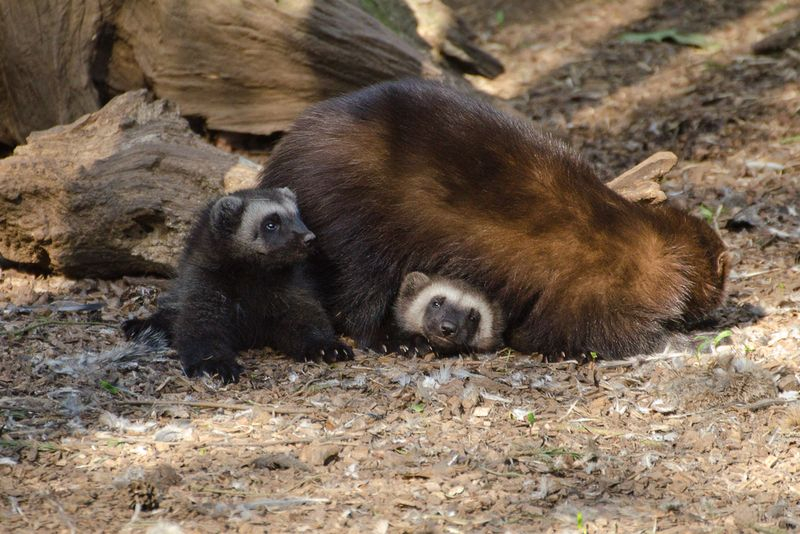
Photo: https://www.zooborns.com/ 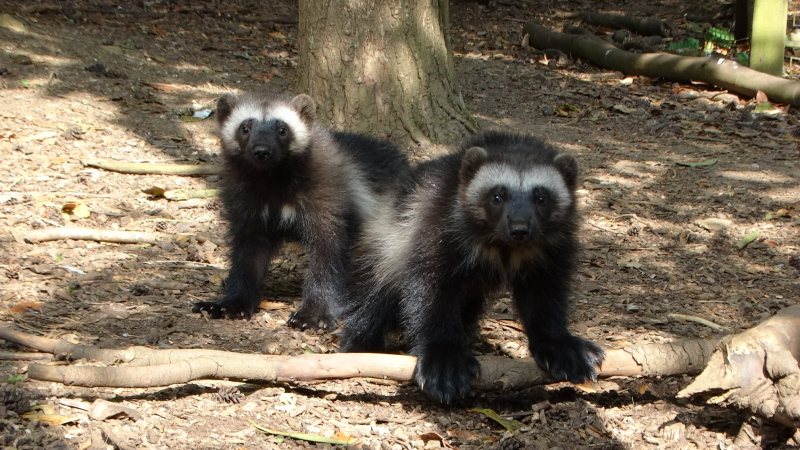
Photo: https://www.zooborns.com/ -
There is no threat to wolverines. The creature has an extremely low population density and needs a very big home area. Although their numbers are declining, particularly in Europe, where it is regarded as "Vulnerable", they are listed as having "Least Concern" for extinction on the Red List of the International Union for Conservation of Nature. There are thought to be between 15,000 and 30,000 people living there.
Climate change poses the biggest threat to wolverines. Warmer temperatures may result in less snow, which wolverines rely on for food and breeding, as was previously indicated. In February, female wolverines dig a den in the snow, which they stay in until mid-May when the young are weaned. So, only regions with late-spring snowmelts are home to wolverines on an ongoing basis. This fact has raised worries that global warming will cause wolverine populations' ranges to decrease.
Wolverines' need for huge territory puts them in conflict with human development, and hunting and trapping further drive down their population, driving them out of most of their former habitat; efforts to have them listed as an endangered species haven't had much luck.
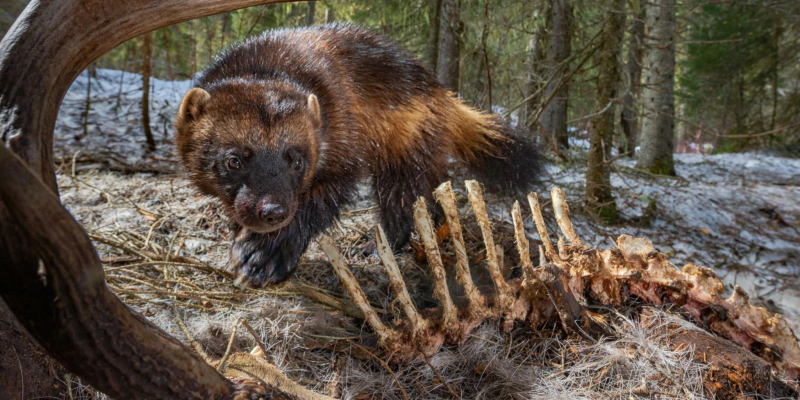
Photo: https://www.nationalgeographic.com/ 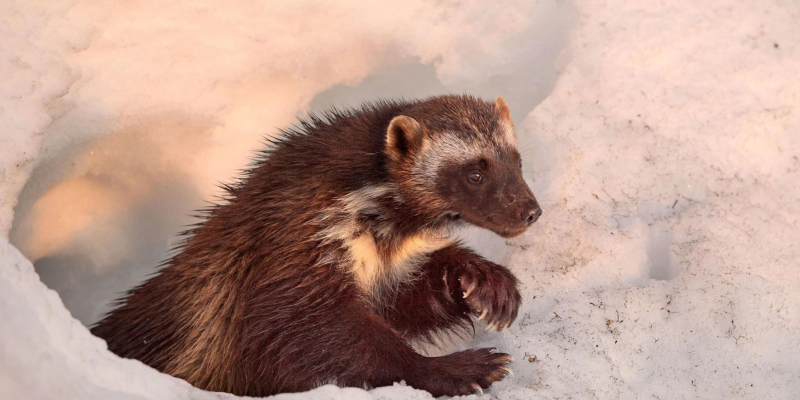
Photo: https://www.nationalgeographic.com/


























